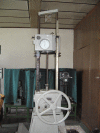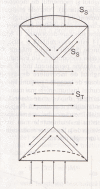Contributions on the study of the compressive strength of the light-cured composite resins
- PMID: 24778814
- PMCID: PMC3994670
Contributions on the study of the compressive strength of the light-cured composite resins
Abstract
The mechanical properties of the light-cured composite resins are related to the material composition, but also vary according to the light-source characteristics used for polymerization. In this study we followed the compressive strength variation for a light-cured composite resin according to the time of exposure to the curing light. With that end in view,18 test pieces were made from a light-cured hybrid composite material (Filtek Z250). The test pieces where then submitted to a compressive force by a mechanical properties universal testing machine. Our results didn't show an increase of the compressive strength according to the light-curing time increasing, than only in the light-curing time limit indicated by the manufacturer. A longer light-curing time may induce a shrinkage polymerization growth with the formation of internal tensions inside the material. The composite materials light-curing in short layers as long as there is indicated by the manufacturer seems to be a safer method to make the best from a resin qualities, then an exaggerated increase of the light-curing time. The light-curing is indicated to be done in the direction of the compressive forces. To confirm this supposition other mechanical tests are also necessary.
Keywords: composite resins; compressive strength; light-curing time.
Figures






Similar articles
-
A comparative evaluation of curing depth and compressive strength of dental composite cured with halogen light curing unit and blue light emitting diode: an in vitro study.J Contemp Dent Pract. 2012 Nov 1;13(6):834-7. doi: 10.5005/jp-journals-10024-1238. J Contemp Dent Pract. 2012. PMID: 23404012
-
Diametral tensile strength of composite resins submitted to different activation techniques.Braz Oral Res. 2006 Jul-Sep;20(3):214-8. doi: 10.1590/s1806-83242006000300006. Braz Oral Res. 2006. PMID: 17119703
-
[Establishment of a composite resin inlay technique. Part 1. The effects of various curing modes on mechanical properties of composite resins].Shika Zairyo Kikai. 1989 Mar;8(2):155-67. Shika Zairyo Kikai. 1989. PMID: 2690393 Japanese.
-
[Light-curing effectiveness using led lamps: a review].Rev Cient Odontol (Lima). 2022 Sep 28;10(3):e120. doi: 10.21142/2523-2754-1003-2022-120. eCollection 2022 Jul-Sep. Rev Cient Odontol (Lima). 2022. PMID: 38389554 Free PMC article. Review. Spanish.
-
Free-Radical Photopolymerization for Curing Products for Refinish Coatings Market.Polymers (Basel). 2022 Jul 13;14(14):2856. doi: 10.3390/polym14142856. Polymers (Basel). 2022. PMID: 35890631 Free PMC article. Review.
Cited by
-
Effect of curing distance for cure depth in composite resin.Bioinformation. 2023 Dec 31;19(13):1353-1358. doi: 10.6026/973206300191353. eCollection 2023. Bioinformation. 2023. PMID: 38415033 Free PMC article.
References
-
- Bratu D., et al. Materiale dentare în cabinetul de stomatologie. 2. Timisoara: Ed. Helicon; 1998. pp. 199–200.
-
- Kim K.H., Ong J.L., Okuno O. The effect of filler loading and morphology on the mechanical properties of contemporary composites. J Prosthet Dent. 2002 Jun;87(6):642–649. - PubMed
-
- Brandão L., Adabo G.L., Vaz L.G., Saad J.R. Compressive strength and compressive fatigue limit of conventional and high viscosity posterior resin composites. Braz Oral Res. 2005 Oct;Dec;19(4):272–277. - PubMed
-
- Manhart J., Kunzelmann K.H., Chen H.Y., Hickel R. Mechanical properties and wear behavior of light-cured packable composite resins. Dent Mater. 2000 Juan;16(1):33–40. - PubMed
-
- Jandt K.D., Mills R.W., Blackwell G.B., Ashworth S.H. Depth of cure and compressive strength of dental composites cured with blue light emitting diodes (LEDs) Dent Mater. 2000 Juan;16(1):41–47. - PubMed
LinkOut - more resources
Full Text Sources
